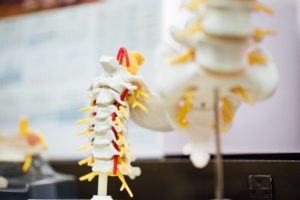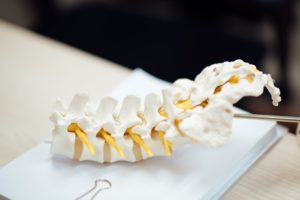
If you are struggling with nerve pain, you may feel like someone is following you around, randomly jabbing you with a needle. Maybe you ache all day or don’t sleep well. It’s difficult to lead an everyday life when your daily flow is constantly brought to a screeching halt by a jolt of sharp pain. For many people with diabetes, painful diabetic neuropathy (PDN) can be annoying and frustrating at best, disabling at worst.
Board-certified in pain management and anesthesiology, Dr. Richard P. Winne, Jr., MD, shares with us his insights into neuropathy and its treatments. He is one of the most sought-after doctors for an uncommon condition known as Complex Regional Pain Syndrome (CRPS), also known as Reflex Sympathetic Dystrophy (RES). This is a painful neuropathic condition that can require a great deal of treatment by a very knowledgeable and experienced doctor and team.
Dr. Winne’s dedicated team provides the full spectrum of pain care—medical, psychological, physical, and interventional services, including spinal cord stimulation. To ensure the complete care their patients need, they also work closely with neurosurgeons, orthopedic spine surgeons, physical therapists, an acupuncturist, a psychologist, and nearly every other kind of medical specialist.
Recently Dr. Winne discussed with us an exciting breakthrough device that can bring a new level of pain relief. This spinal cord stimulation device, called HFX, was approved by the FDA with a specific indication for treating PDN.
Painful Diabetic Neuropathy
Neuropathic pain is caused by damage within the nervous system – the nerves, spinal cord, or brain. The effects of neuropathic pain are not just physical; they can trigger depression and anxiety, which, in turn, can exacerbate the pain.
Diabetes brings on a host of complications. The American Diabetes Associates states, “about half of all people with diabetes have some form of nerve damage.” PDN can be one of the more debilitating conditions to live with and manage, and, until recently, there have been few effective treatment options beyond medications, which don’t always produce the desired results.
However, Dr. Winne is quick to point out that not all diabetic neuropathy is painful neuropathy, and that PDN is located in the peripheral body areas, mainly arms and feet. “They can get all kinds of problems from diabetic neuropathy, but it’s not painful. So we don’t do stimulators if you have a fast heartbeat from diabetes because your heart nerves are affected by your diabetes, which happens, or your bowels don’t work as well because you’re nourishing. That’s all diabetic neuropathy, but it’s not painful peripheral neuropathy — that’s the difference,” he says.
Symptoms
Caused by long-term high blood sugar levels, PDN may bring mild symptoms or be extremely painful and debilitating. Depending on the nerve damage, it can affect almost any part of the body, from head to feet, and cause sharp pain, numbness, digestive illness, vision trouble, and problems with various organs and systems. Symptoms can intensify without treatment.
Treatments
Currently there is no cure for PDN. The goals of treatment are to slow its progression, address complications, alleviate pain, and improve the patient’s ability to function. You can take steps to prevent, delay, improve, or slow the progression of nerve damage, such as controlling blood sugar levels and blood pressure, surgery that destroys pain-causing nerves, or medications that provide widely varying degrees of relief.
Some patients benefit from physical or occupational therapy. And then some forms of injections can be utilized to help reset the sympathetic nervous system, so it behaves more normally–a sympathetic blockade. You turn off the sympathetic nervous system for a brief time, which allows that nervous system to reboot. Dr. Winne describes this process more clearly through a computer analogy — “Just like if your computer wasn’t working properly, you just turn it off, turn it back on, and somehow it reboots properly. Same thing with neurosis.”
Dr. Winne recommends spinal cord stimulation as a long-term solution. He further explains to us how electrical impulses interrupt pain signals with a very relatable example. “Say you hit your head on a desk, right? And then you pull away, and you rub it. It feels much better, which makes no sense, right? Because you just smashed it; now, you’re rubbing it. Why does it feel better? Because when you rub it, you’re activating the nervous system to help inhibit the pain signals. So you actually turn on that part of the nervous system that inhibits pain, and that’s what the stimulator does, is it stimulates a spinal cord to turn on and activate a part of the nervous system, which pivots pain being felt,” he says.
New Treatment
An extremely important recent FDA approval was just announced authorizing spinal cord stimulation (SCS) for the treatment of painful diabetic neuropathy. We expect this to help the lives of thousands. Dr. Winne’s enthusiasm is apparent, as this new device may alleviate nerve pain more effectively and reliably than previous methods.

Approval
Nevro Corp, a medical device company, received FDA approval for HFX, its Senza system for treating chronic pain associated with PDN. Approval was based on the system’s demonstrated safety and efficacy in the SENZA-PDN trial published in JAMA Neurology.
It was shown that high-frequency, or 10 kHz, SCS is safe and effective for people suffering from extreme pain and for those whose medication does not provide the necessary relief. After a year, patients reported clear, sustained benefits–less pain, improved sleep, and better quality of daily life. This may mean that some patients can leave their mediations (and accompanying side effects) behind.
PDN can now be treated with stimulators, which Dr. Winne has been doing slightly in the past. As he tells us, “Now, painful diabetic, peripheral neuropathy has been studied and now approved to be treated with stimulators, which we’ve kind of been doing a little bit over the years, and I’ve been talking to various patients about doing it, but it’s never been fully approved. Not that we can’t do it, not that Medicare wouldn’t pay for it, but now they (i.e., Medicare) definitely will.” This is excellent news to patients who desperately need this treatment.
How It Works
Here’s a quick summary of the device’s ultimate goal: When you stick this wire in someone’s back, you stimulate the spinal cord, and that inhibits their pain. Delivering 10,000 electric pulses per second, HFX does not allow the painful sensation to be relayed up to the brain.

The use of HFX begins with a test. Before implantation, the wires are temporarily placed on the intended spot on the body and connected to an external control box. You can test it for one to two weeks in order to see how it feels and if you like it.
Unlike surgery, HFX is minimally invasive and totally reversible. If the pain improves within a few years, patients can have the system removed. HFX may be a viable option for people with non-operative conditions or who are too ill for surgery. “If an 85-year-old lady who is not a good surgical candidate, either because her disease is too extensive or she’s too ill, that spinal cord stimulator is certainly a lot less than basic procedure and option for her,” explains Dr. Winne.
Conclusion
The HFX device brings a new level of hope to people with diabetes. It puts into play a powerful new weapon against the debilitating effects of painful diabetic neuropathy.
We thank Dr. Winne for sharing with us his expertise in the world of neuropathy management, and we appreciate his dedication to giving his patients as many pain-free moments as possible. With the new HFX device in their arsenals, physicians now have more options to manage patients’ pain and offer them a much-improved quality of life.
Bibliography (Full Citations)
Campbell, Patrick Campbell. “FDA Approves Spinal Cord Stimulation Therapy for Painful Diabetic Neuropathy.” Endocrinology Network, 2021 MJH Life Sciences and Endocrinology Network, 19 July 2021, www.endocrinologynetwork.com/view/fda-approves-spinal-cord-stimulation-therapy-painful-diabetic-neuropathy.
Dansinger, Michael. “What Is Diabetic Neuropathy?” WebMD, WebMD LLC, 14 May 2021, www.webmd.com/diabetes/diabetes-neuropathy.
“Diabetic Neuropathy: Symptoms & Causes.” Mayo Clinic, Mayo Foundation for Medical Education and Research, www.mayoclinic.org/diseases-conditions/diabetic-neuropathy/symptoms-causes/syc-20371580. Accessed 20 Aug. 2021.
“Diabetic Neuropathy: Diagnosis & Treatment.” Mayo Clinic, Mayo Foundation for Medical Education and Research, www.mayoclinic.org/diseases-conditions/diabetic-neuropathy/diagnosis-treatment/drc-20371587. Accessed 20 Aug. 2021.
Hale, Conor. “Nevro Notches FDA Approval for High-Frequency Neurostimulation in Painful Diabetic Neuropathy.” Fierce Biotech, Questex LLC, 19 July 2021, www.fiercebiotech.com/medtech/nevro-scores-fda-approval-for-high-frequency-neurostimulation-painful-diabetic-neuropathy.
“Neuropathy.” American Diabetes Association, American Diabetes Association, www.diabetes.org/diabetes/complications/neuropathy. Accessed 20 Aug. 2021.
“Richard P. Winne Jr., MD.” Altair Health, Altair Health, altairhealth.com/practitioner/winne. Accessed 20 Aug. 2021.
Watson, James C. Watson. “Neuropathic Pain.” Merck Manual Consumer Version, Merck Sharp & Dohme Corp., a subsidiary of Merck & Co., Inc., Apr. 2020, www.merckmanuals.com/home/brain,-spinal-cord,-and-nerve-disorders/pain/neuropathic-pain?query=diabetic%20neuropathy%20commonly.
Whooley, Sean. “FDA Approves Nevro’s Senza System to Treat Chronic Pain with Diabetic Neuropathy.” MassDevice, WTWH Media LLC, 19 July 2021, www.massdevice.com/fda-approves-nevro-spinal-cord-stimulation-to-treat-chronic-pain-with-diabetic-neuropathy.






0 Comments